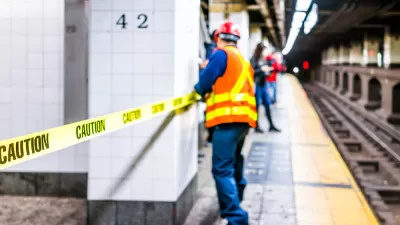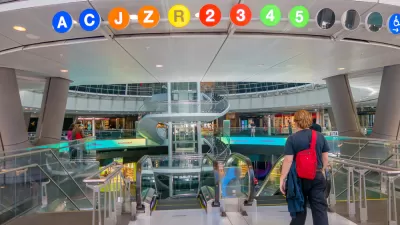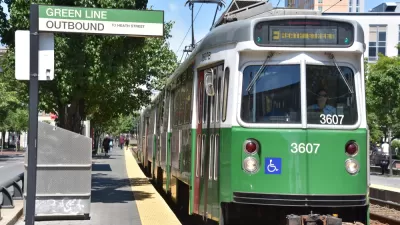The first case study by the Transit Costs Project at New York University's Marron Institute offers a long awaited, and long necessary, glimpse into the bloated costs of construction in the United States.
"Why are American rail projects so costly? The initial results of an ambitious project by three researchers at New York University’s Marron Institute suggest one culprit hiding in plain sight: pointlessly fancy train stations," writes Connor Harris.
The Marron Institute team includes Alon Levy, who spurred some of the first widespread attention to the high costs of transit construction in the United States on the blog Pedestrian Observations before attracting attention from the mainstream media.
Until studies by the Marron Institute and the Eno Center for Transportation, there was a lack of scientistic information about transit spending in the United States.
As detailed by Harris, the team at Marron Institute's first case study focused on the Green Line Extension (GLX) built by the Massachusetts Bay Transportation Authority (MBTA).
"In principle, GLX is simple," writes Harris. "It extends an existing light-rail line 4.3 miles into Boston’s inner suburbs, mostly in a trench that already holds commuter rail tracks. But GLX’s costs ballooned after planning began in 2006, reaching $3 billion in 2015—more expensive per mile than most subways."
As for why the cost for the project ballooned so quickly and so completely, the researchers identified bells and whistles on the line’s seven stations as the source of much of the bloat.
FULL STORY: Why Is American Rail So Costly?

Manufactured Crisis: Losing the Nation’s Largest Source of Unsubsidized Affordable Housing
Manufactured housing communities have long been an affordable housing option for millions of people living in the U.S., but that affordability is disappearing rapidly. How did we get here?

Americans May Be Stuck — But Why?
Americans are moving a lot less than they once did, and that is a problem. While Yoni Applebaum, in his highly-publicized article Stuck, gets the reasons badly wrong, it's still important to ask: why are we moving so much less than before?

Using Old Oil and Gas Wells for Green Energy Storage
Penn State researchers have found that repurposing abandoned oil and gas wells for geothermal-assisted compressed-air energy storage can boost efficiency, reduce environmental risks, and support clean energy and job transitions.

Minneapolis Bans Rent-Setting Software
Four cities have enacted restrictions on algorithmic software that can inflate rent costs.

Oakland to Add 244 New EV Chargers
Oakland plans to launch its new charging network at eight locations by the end of 2025.

Jane Goodall Inspires with Message of Hope, Resilience, and Environmental Action
Speaking in Pasadena, Jane Goodall offered a hopeful and inspirational message, urging global compassion, environmental responsibility, and the power of individual action to shape a better future.
Urban Design for Planners 1: Software Tools
This six-course series explores essential urban design concepts using open source software and equips planners with the tools they need to participate fully in the urban design process.
Planning for Universal Design
Learn the tools for implementing Universal Design in planning regulations.
Heyer Gruel & Associates PA
City of Moreno Valley
Institute for Housing and Urban Development Studies (IHS)
City of Grandview
Harvard GSD Executive Education
Salt Lake City
NYU Wagner Graduate School of Public Service
City of Cambridge, Maryland





























